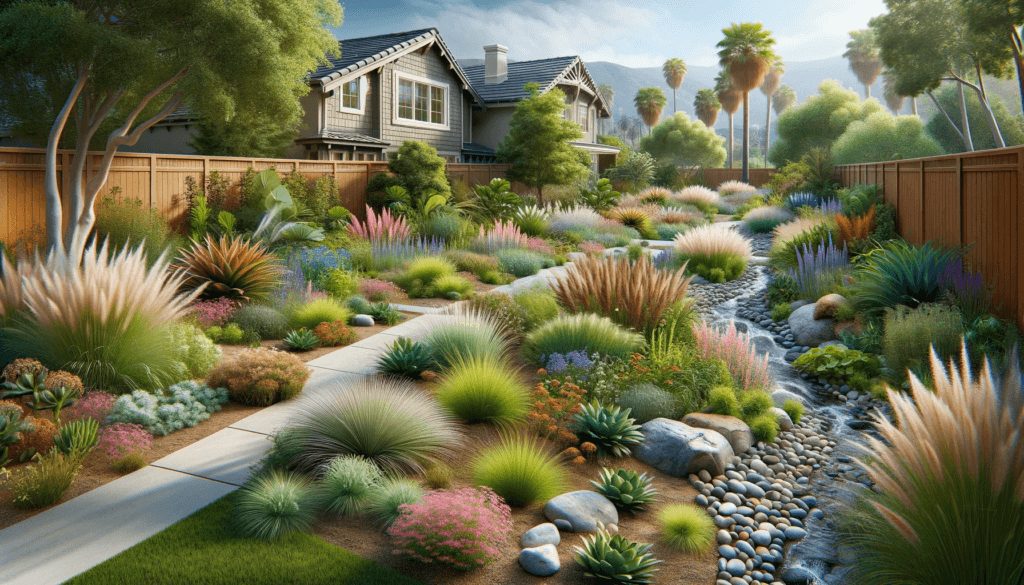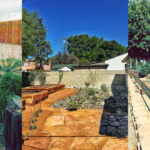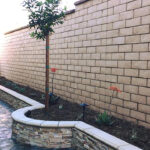“Green Your Greenspace: Unlock Savings and Sustainability with California’s Turf Replacement Rebate Program”
In an age where water conservation is more crucial than ever, California is leading the way with its innovative Turf Replacement Rebate Program. This initiative is not just about beautifying landscapes; it’s a vital step towards a sustainable future. Remarkably, lawn maintenance accounts for a staggering 75% of the average household water bill. California’s response to this challenge is a game-changer, offering substantial rebates to residents who opt for water-wise yards.
Key Takeaways
| Aspect | Details |
|---|---|
| Rebate Amount | Up to $10,000 for lawn replacement |
| Water Savings | Up to 75% reduction in household water use |
| Environmental Impact | Significant reduction in water wastage |
| Application Process | Two-step, with a 180-day project completion window |
| Design Requirements | Drought-resistant plants, efficient irrigation, permeable surfaces |

Understanding the Basics of the Turf Replacement Rebate Program
What Is the Turf Replacement Rebate Program?
Transforming traditional lawns into drought-resistant landscapes, the program is a strategic move to conserve water.
Key Objectives of the Program
The program’s goals extend beyond water conservation, aiming to foster sustainable and environmentally friendly landscaping practices across California. For deeper insights into sustainable landscaping practices, visit our drought-tolerant landscaping blog.
Quick Facts:
- 75% of household water use goes to lawn maintenance.
- $10,000 potential savings with the rebate program.
- Encourages a sustainable and environmentally friendly approach.
Eligibility Criteria for the Turf Replacement Rebate
Who Can Apply?
Eligibility spans a wide range of residents, ensuring broad accessibility and impact. To learn more about our range of services, check out our services.
Conditions for Eligibility
Meeting specific criteria is essential for participation, including the existing lawn condition and adherence to design guidelines.
Eligibility Checklist:
- Existing Lawn: Must have turf prior to the project.
- Design Adherence: Follow specified landscaping guidelines.
- Application Completion: Submit a thorough application.
Financial Incentives and Rebate Details
Rebate Amounts and Limits
Rebates can be significant, varying by region but offering substantial financial incentives.
How the Rebate Amount Is Calculated
The calculation is typically based on the square footage of the lawn replaced, with a cap on the maximum rebate amount.
Rebate Insights:
- Rebates vary by region.
- Based on square footage of lawn replaced.
- Cap on maximum rebate.
For more detailed information on the rebate program, visit California Turf Removal Rebate Program.
Application Process for the Turf Replacement Rebate
Step-by-Step Guide to Applying
A clear, two-part application process ensures participants understand the steps involved in claiming their rebate.
Common Pitfalls to Avoid in the Application
Awareness of potential hurdles in the application process can help ensure a smooth and successful rebate claim.
Application Tips:
- Start Early: Apply before beginning your project.
- Follow Guidelines: Ensure all criteria are met.
- Documentation: Keep all records for smooth processing.
Discover more landscaping tips at Landscaping Tips.
Design Requirements for Turf Replacement
Plant and Landscape Requirements
Requirements focus on drought-resistant plants and efficient landscape design. Discover a range of drought-resistant shrubs on our drought-resistant shrubs blog.
Water Conservation Techniques
Incorporating water-saving irrigation and landscaping techniques is a core element of the program.
Design Essentials:
- Drought-Resistant Plants: Opt for low-water-usage species.
- Efficient Landscape Design: Plan for water conservation.
- Irrigation Techniques: Utilize drip systems and other efficient methods.
Sustainable Landscaping: A Core Element of the Program
Integrating Drought-Resistant Plants
Choosing the right plants is key to creating a landscape that requires minimal water.
Utilizing Sustainable Water Features
Innovative features like rain gardens and permeable surfaces contribute to water conservation.
Sustainable Landscaping Tips:
- Select Native Plants: Adapted to local climate conditions.
- Rain Gardens: Natural water absorption and filtration.
- Permeable Surfaces: Reduce runoff and increase water absorption.
For additional dos and don’ts in landscaping, check out The Dos and Don’ts of Landscaping.
Irrigation and Water Efficiency
Modifying Existing Irrigation Systems
Transforming traditional irrigation to more efficient systems is a requirement.
Best Practices for Water Conservation
Adopting best practices in water usage ensures the long-term success of the landscaping project.
Irrigation Best Practices:
- Drip Irrigation: Efficient water delivery directly to roots.
- Rotating Sprinklers: Minimize water waste.
- Regular Maintenance: Ensures efficiency and minimizes leaks.
Explore more on this topic at Landscaping Tips.
Common Questions About the Turf Replacement Program
FAQs Addressed
Addressing common queries to help prospective applicants.
Where to Find More Information
Directing readers to additional resources for comprehensive program details.
FAQ Highlights:
- Eligibility: Who can apply and what are the conditions?
- Rebate Amount: How much can you save?
- Project Completion: What is the timeline and process?
For an extensive FAQ list, visit Turf Replacement Program FAQs.
Post-Application: Implementing Your Turf Replacement Project
Best Practices for Turf Removal
Guidelines on how to effectively remove existing turf. For more information on turf removal techniques, explore our blog.
Landscaping and Design Tips
Tips for designing and implementing a water-efficient landscape. Find more landscaping ideas at Landscaping Tips.
Project Implementation Checklist:
- Careful Removal: Minimize damage to the area.
- Soil Preparation: Ready the ground for new plants.
- Efficient Design: Plan for water conservation and aesthetics.
The Environmental Impact of Turf Replacement
Water Conservation Benefits
Highlighting the significant water savings achieved through the program.
Contributing to a Sustainable Future
Understanding the broader environmental impact of reduced water usage in landscaping.
Environmental Advantages:
- Reduced Water Usage: Major savings in household water consumption.
- Enhanced Biodiversity: Supports local wildlife and ecosystems.
- Lower Carbon Footprint: Less water usage means reduced energy for water delivery and treatment.
For insights on drought-tolerant landscaping, visit Drought Tolerant Landscaping.
Additional Resources and Support
Where to Seek Help
Information on where applicants can get additional help and advice.
Additional Rebates and Incentives Related to Turf Replacement
Details on other available incentives that complement the Turf Replacement Rebate Program.
Support and Resources:
- Expert Advice: Consult with landscaping professionals.
- Community Resources: Local workshops and events.
- Online Tools: Rebate calculators and planning guides.
For more comprehensive support and information, explore our blog.
This article provides a detailed overview of California’s Turf Replacement Rebate Program, highlighting its benefits, requirements, and the steps involved in transforming your lawn into a sustainable, water-efficient landscape. It offers practical advice and resources to guide you through each stage of the process, from planning and applying to implementing your project and reaping its environmental benefits.
For more insights and updates on sustainable landscaping and water conservation, be sure to visit AllEnvironmentalDesign.com, where we continuously explore and share the latest trends and tips in the world of eco-friendly landscaping.









